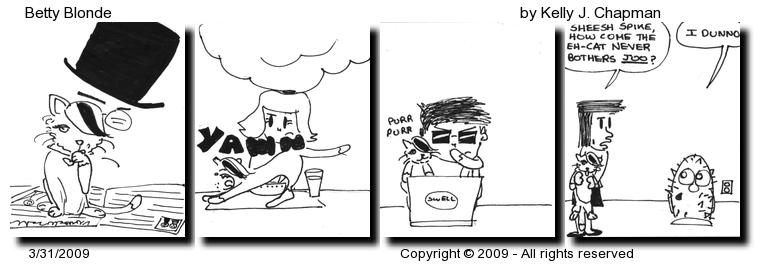 The entire purpose of this post a marker to this new article by Michael Egnor on the mind brain problem described in this article at the Discovery Institute. He is a pediatric neurosurgeon who has considered both the physiological and philosophical (with special emphasis on the writings of Thomas Aquinas) implications of the conflation of the mind with the brain. This article, titled Science and the Soul, as is the the entire body of his work that I have read so far, is extremely well written makes a very, very strong case that the mind is not the brain.
The entire purpose of this post a marker to this new article by Michael Egnor on the mind brain problem described in this article at the Discovery Institute. He is a pediatric neurosurgeon who has considered both the physiological and philosophical (with special emphasis on the writings of Thomas Aquinas) implications of the conflation of the mind with the brain. This article, titled Science and the Soul, as is the the entire body of his work that I have read so far, is extremely well written makes a very, very strong case that the mind is not the brain.
Tag: mind brain problem
Michael Egnor recently authored a new article in First Things on the mind-brain problem titled A Map of the Soul. I am really just putting this up here as a placeholder and reference for use in future discussions. Egnor writes clearly and concisely about something he has studied up close as a brain surgeon. In addition, it is obvious that he has spent time trying to understand Philosophy and Philosophy of mind. He makes a compelling case for a dualist view. Here is an excerpt of some the observations that have informed his belief in the existence of the mind apart from the brain:
Wilder Penfield, an early-twentieth-century neurosurgeon who pioneered seizure surgery, noted that during brain stimulation on awake patients, he was never able to stimulate the mind itself—the sense of “I”—but only fragmented sensations and perceptions and movements and memories. Our core identity cannot be evoked or altered by physical stimulation of the brain.
Relatedly, Penfield observed that spontaneous electrical discharges in the brain cause involuntary sensations and movements and even emotions, but never abstract reasoning or calculation. There are no “calculus” seizures or “moral” seizures, in which patients involuntarily take second derivatives or ponder mercy.
Similar observations emerge from Roger Sperry’s famous studies of patients who had undergone surgery to disconnect the hemispheres of the brain. This was done to prevent seizures. The post-operative patients experienced peculiar perceptual and behavioral changes, but they retained unity of personal identity—a unified intellect and will. The changes Sperry discovered in his research (for which he won a Nobel Prize) were so subtle as to pass unnoticed in everyday life.
In 1994 a secular guy named David Chalmers, then at University of Arizona, got famous because he characterized something that had been known and discussed for centuries. He described a problem James Trefil, a Physics professor at George Mason University described this way:
It is the only major question in the sciences that we don’t even know how to ask.
In a couple of papers, he described why the mind-brain (spirit) problem is no where close to being answered in any meaningful way. There is nothing religious in this article nor is David Chalmers friendly in any way toward Christianity–he is an atheist. Much deeper thinkers than he had said this same thing year after year for many years, but for some reason, he got famous for it. Here are his articles and a lengthy 2015 article on the subject in the Guardian.
- The Hard Problem (1994)
- Consciousness and It’s Place in Nature (2003)
- An article from 2015 on why there had been virtually no progress on the problem even though we know a lot more about the brain (what part of the game attracts us to gambling, the part of the brain that causes different kinds of problems, etc.
- They even did a TED talk on this thing.
I even wrote about it in my blog.
It caused an uproar in the psychology, philosophy and neuroscience worlds, maybe because he did such a good job of describing the problem. People have been trying to find ways to work on it much more aggressively ever since. I say they have been trying to find ways to work on it because they are not really working on the problem itself because it is not amenable to science. They are just trying to figure out a way to work on it.
This is all interesting stuff.
Betty Blonde #430 – 03/10/2010

Click here or on the image to see full size strip.
Denyse O’Leary often writes about the mind-brain problem. Her most recent article over at Evolution News and Views is titled Would We Give Up Naturalism to Solve the Hard Problem of Consciousness? I was reminded of a discussion Christian and I had the day before yesterday about Information Theory and one of Christian’s graduate school projects. At one point the discussion turned to Christianity, eschatology, and artificial intelligence. Christian made the comment that the current state of Artificial Intelligence was no where close to what would be necessary to create the conscious image of the beast described in Revelation 13.
O’Leary’s article gives a good explanation of why we are so far from any understanding of how to create a conscious entity. It centers on an idea articulated by philosopher and cognitive scientist David Chalmers in a paper titled Facing Up to the Problem of Consciousness published in 1995. He divides the problem of consciousness into those parts that are tractable with our current understanding and abilities and the really big problem for which we do not have a clue. The part he calls the easy problems include things like the deliberate control of behavior, the ability to discriminate, categorize and react to environmental stimuli and other measurable phenomena.
For the hard part of the problem, I recommend a reading of the entire article. It set off a firestorm of response and really framed this issue for our generation. Here is the paragraph that starts his description of the part on which naturalistic science is stuck:
The really hard problem of consciousness is the problem of experience. When we think and perceive, there is a whir of information-processing, but there is also a subjective aspect. As Nagel (1974) has put it, there is something it is like to be a conscious organism. This subjective aspect is experience. When we see, for example, we experience visual sensations: the felt quality of redness, the experience of dark and light, the quality of depth in a visual field. Other experiences go along with perception in different modalities: the sound of a clarinet, the smell of mothballs. Then there are bodily sensations, from pains to orgasms; mental images that are conjured up internally; the felt quality of emotion, and the experience of a stream of conscious thought. What unites all of these states is that there is something it is like to be in them. All of them are states of experience.
I think Chalmers did a great service in framing this problem properly. Almost two decades have passed since this paper was written. Many people, including Chalmers (see the bottom half of the linked paper), have taken a run at providing a naturalistic explanation of this hard problem of consciousness and failed. O’Leary has spent a good chunk of her career writing about these failures. The upshot is that the image of the beast described in Revelation 13 is beyond the scope of our current understanding. I do not know whether that is a relief or not.
Betty Blonde #184 – 03/31/2009

Click here or on the image to see full size strip.
